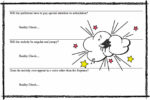Vintage PA: Block Towers
I love it when another blogger jogs my memory and I think, “Oh I need to tell everyone about this other thing that my students and I do.” Well, it happened again. A few years ago, Bradford of The Practicing Musician posted a very helpful article on using Lego bricks to help students understand rhythmic subdivisions. The article isn’t available any longer but just search for Legos Rhythm Activities and you will get a lot of ideas plus templates.
You may remember my article on One/Two Line Reading. Well, my students and I enjoy another pre-reading activity and we use blocks for this one (Lego Duplos, Megabloks, or traditional wooden ones). Kids think it’s a game and forget that they are learning. (Confession: I’ve actually used this activity with seniors who have never read music before and they think it’s a hoot.)
Robert Pace and his wife, Helen, used a kind of bar graph to help beginning readers. The idea was to help the student cope with directional notation—to understand that up means move right for a higher sound, same level means to stay on the same pitch, and down means move left for a lower sound.
 My students and I use blocks to do the same thing. We usually begin with 3 consecutive keys. It doesn’t matter if they are white or black. I let the student choose the hand, register, and the keys. I want them to know that this basic principle of notation applies no matter where they are playing on the keyboard or which hand they are using. When they do this activity, students naturally realize that they don’t use the same fingers in each hand for the same direction. This eliminates a big point of confusion in on staff reading and sets them up for success.
My students and I use blocks to do the same thing. We usually begin with 3 consecutive keys. It doesn’t matter if they are white or black. I let the student choose the hand, register, and the keys. I want them to know that this basic principle of notation applies no matter where they are playing on the keyboard or which hand they are using. When they do this activity, students naturally realize that they don’t use the same fingers in each hand for the same direction. This eliminates a big point of confusion in on staff reading and sets them up for success.
After a student is comfortable playing up and down with a few fingers, we add one at a time until we have all 5. I’ve found it best to begin with 1-2 or 1-2-3. Some teachers teach 2-3-4 first because of hand balance. If you do this, be sure to start with the correct height block (not the shortest) or you will have a confused and frustrated student when you add the thumb.
This activity is great in groups too. Students take turns changing one block and then playing the result. It can get a bit competitive as students try to trick each other. I let them change two blocks once they are comfortable. Adding more blocks will also up the difficulty level. My students have had them stretched across the entire music rack and onto the sides.
You can give points for correct plays. The winner gets the most points in a given amount of time. In an individual format, you can define winning as getting a certain number of points. I find this helps me keep a lesson or class on track, time-wise.
This activity is also fun using shoeboxes to build “songs” on the floor. If you want to take it further, students can decorate the boxes as part of a practice incentive program. Just make sure you can see the boxes from a seated position at the keyboard. And, don’t invite my 13 month old Grandson over to play. He plays let’s see who can knock down the blocks fastest.
Portions of this post were published in December 2013



